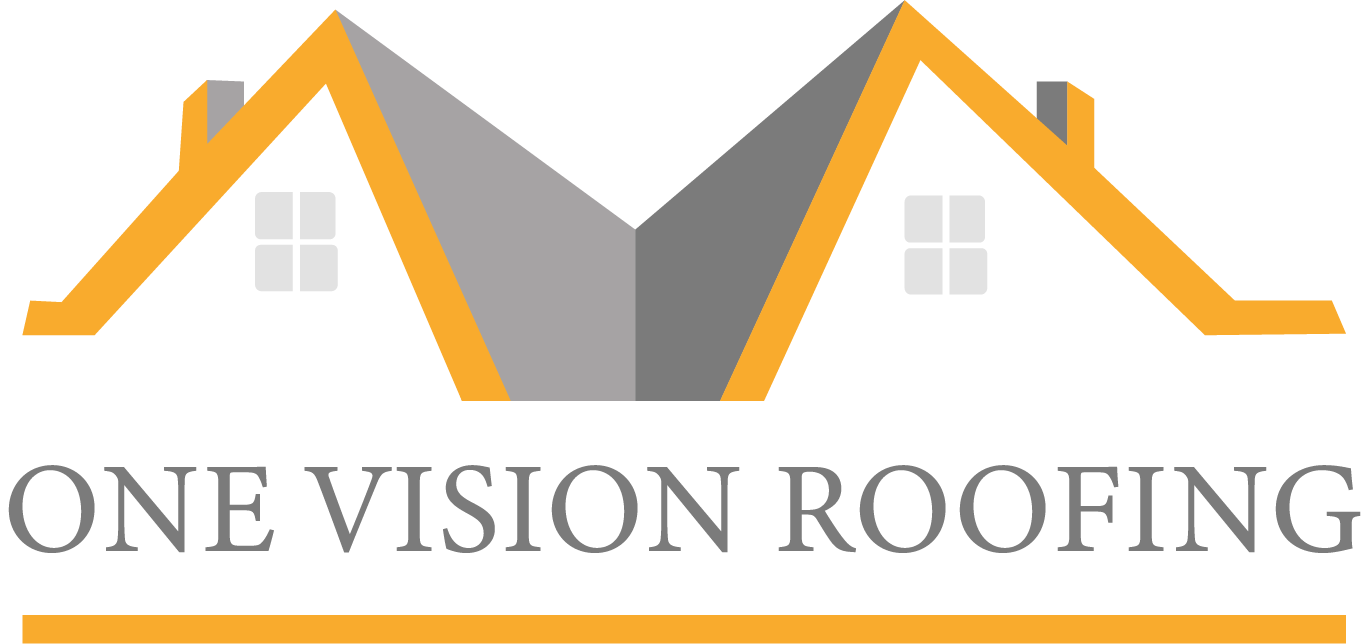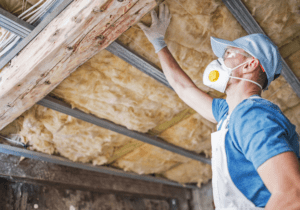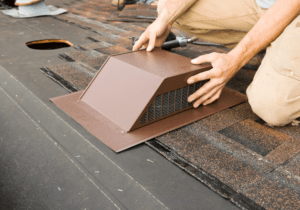Are you struggling to maintain a comfortable temperature in your home, or are your energy bills skyrocketing? The culprit might be right above you—your roof. Proper roof ventilation and insulation are critical for homeowners. They play a significant role in maintaining comfort, ensuring energy efficiency, and protecting the overall integrity of your home. In this blog post, we’ll explore why roof ventilation and insulation are so important, identify signs that your home might need improvements, and discuss the benefits and solutions to enhance your living space.
Understanding Roof Ventilation and Insulation
What is Roof Ventilation?
Roof ventilation refers to the system that allows air to circulate through the attic, preventing heat and moisture from building up. This is typically achieved through a combination of intake vents (at the eaves or soffits) and exhaust vents (at or near the roof ridge).
 What is Roof Insulation?
What is Roof Insulation?
Roof insulation, on the other hand, involves installing materials within the attic or roof structure to reduce heat transfer. This helps to keep your home warm in the winter and cool in the summer by preventing the exchange of heat between the attic and the living spaces.
Why Are They Essential?
Both roof ventilation and insulation are crucial for maintaining a comfortable and energy-efficient home. Proper ventilation prevents the build-up of heat and moisture, which can lead to mold growth and structural damage. Meanwhile, effective insulation minimizes heat loss in winter and heat gain in summer, reducing the strain on your heating and cooling systems.
Signs of Poor Ventilation and Insulation
High Energy Bills
One of the first signs that your home may be suffering from poor ventilation and insulation is a sudden increase in energy bills. If your HVAC system is working overtime to maintain a comfortable temperature, it might be due to inadequate insulation or ventilation.
Temperature Fluctuations
Do you notice significant temperature differences between rooms or even within the same room? This could be another indication of poor insulation. Uneven temperatures often result from insufficient insulation, which fails to maintain consistent indoor temperatures.
Moisture and Mold Issues
Moisture build-up in the attic is a clear sign of poor ventilation. If left unchecked, this can lead to mould growth, which poses health risks and can damage your home’s structure. Look for signs of mould on walls and ceilings, particularly in the attic.
The Benefits of Proper Roof Ventilation and Insulation
Improved Indoor Air Quality and Comfort
Proper ventilation improves indoor air quality by removing stale air and pollutants from the attic. Combined with good insulation, your home will maintain a more stable and comfortable temperature, enhancing your overall comfort.
Energy Savings and Environmental Impact
When your home is well-insulated and ventilated, your HVAC system doesn’t have to work as hard. This translates to lower energy bills and a reduced carbon footprint. Better energy efficiency means you’re not only saving money but also contributing to environmental conservation.
Extended Roof Lifespan and Protection Against Moisture Damage
Adequate ventilation prevents moisture build-up, which can lead to wood rot and mold. This extends the lifespan of your roof by reducing the risk of damage. Additionally, proper insulation prevents ice dams in winter, further protecting your roof and gutters.
Solutions and Improvements
 Enhancing Ventilation
Enhancing Ventilation
Improving ventilation can be as simple as installing additional vents or upgrading to more efficient vent types. Ridge vents and soffit vents are popular choices that provide excellent airflow. Make sure your attic insulation doesn’t block these vents, as this can inhibit proper airflow.
Upgrading Insulation
If your insulation is old or insufficient, consider upgrading to modern materials like spray foam or fibreglass batts. These materials offer superior thermal resistance and can significantly improve your home’s energy efficiency. Don’t forget to insulate access points like attic doors and hatches.
DIY vs. Professional Help
While some homeowners may feel comfortable tackling minor ventilation and insulation projects themselves, others might prefer to consult professionals. A qualified contractor can assess your current setup, recommend improvements, and ensure that everything is installed correctly for maximum efficiency.
Proper roof ventilation and insulation are fundamental components of a well-maintained home. They not only improve comfort and indoor air quality but also offer significant energy savings and extend the lifespan of your roof. If you’ve noticed any signs of poor ventilation or insulation in your home, now is the time to take action. Assess your current setup and consider making the necessary improvements to enhance your living environment.

 What is Roof Insulation?
What is Roof Insulation? Enhancing Ventilation
Enhancing Ventilation